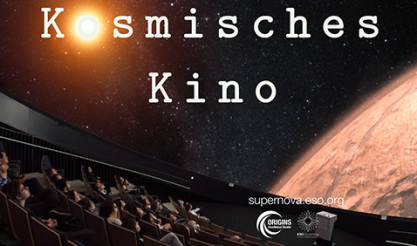Kosmisches Kino
The turbulent life of cosmic giants: How chaotic are galaxy clusters?

In this Kosmisches Kino, Dr Frederick Groth from the University Observatory Munich, LMU takes us on a journey into the turbulent interiors of galaxy clusters.
Galaxy clusters are groups of galaxies that can contain thousands of objects. They are held together by their own gravity and are the most massive bound structures in the universe. When entire galaxy clusters collide and merge, chaos ensues! What drives it? Join us on a journey through the turbulent universe and discover the stormy side of these cosmic giants!
The total mass of a galaxy cluster can be several hundred trillion times the mass of the Sun. However, the dominant component of its visible matter is not the stars or galaxies but the hot, diffuse gas in between the galaxies. Powerful large-scale gas flows, shock waves, and chaotic turbulence propagate through this so-called intracluster medium - processes that take many billions of years. These incredibly slow dynamics shape the intracluster medium and are key to understanding galaxy clusters and their evolution. But how can they be observed?
High-resolution computer simulations make it possible to calculate the evolution of galaxy clusters in time and bring order to this cosmic chaos. They help to understand the effects of cluster collisions, galaxy motions, active supermassive black holes, and stellar winds on the intracluster gas.
In this Kosmisches Kino, Dr Frederick Groth (LMU) takes us on a journey into the turbulent interiors of galaxy clusters. He will show us what they are, how they work, and what we can learn about their history and evolution from supercomputer simulations.
This event is in English without translation.

